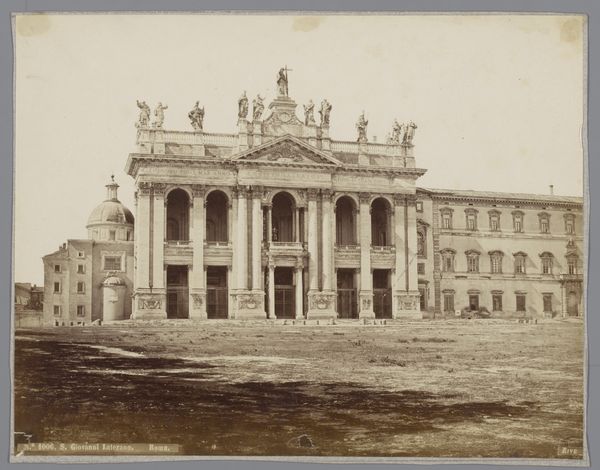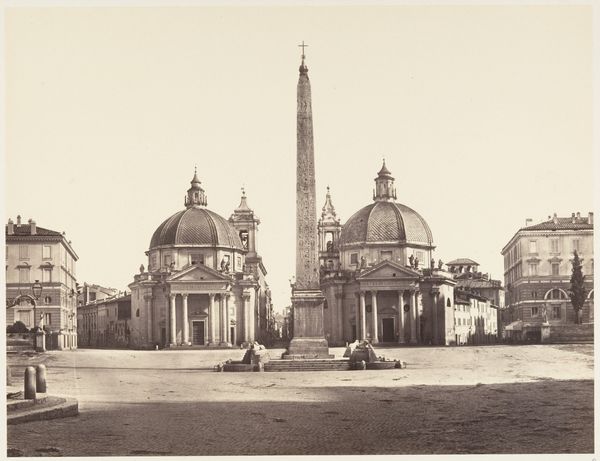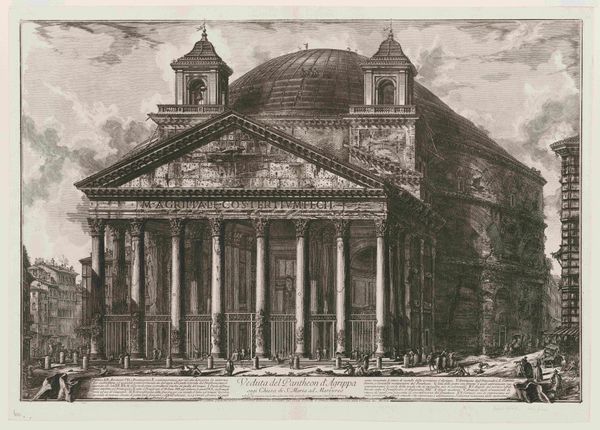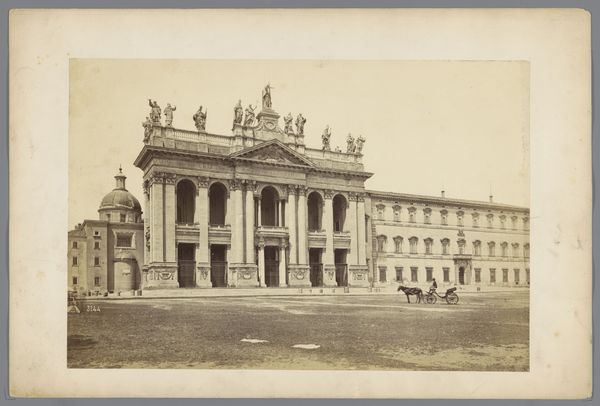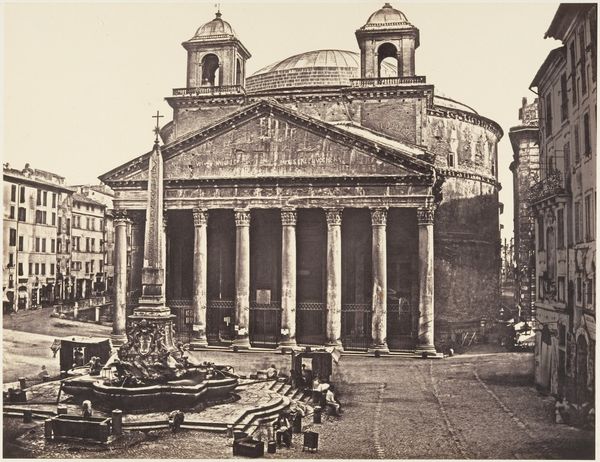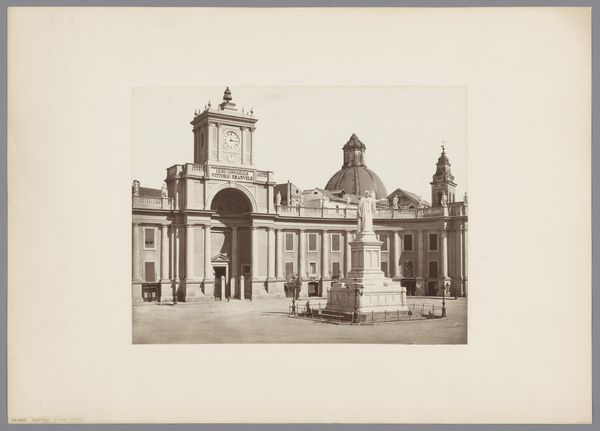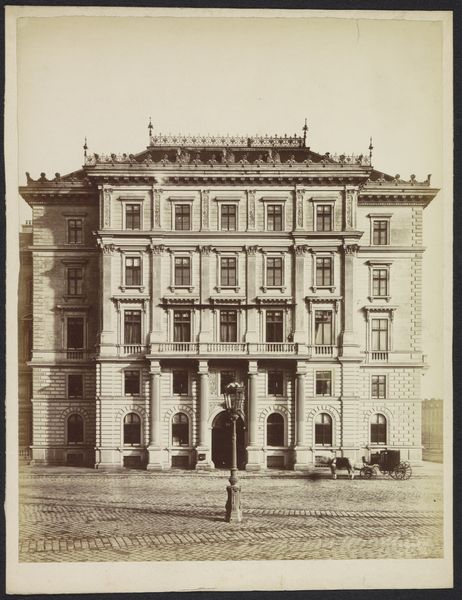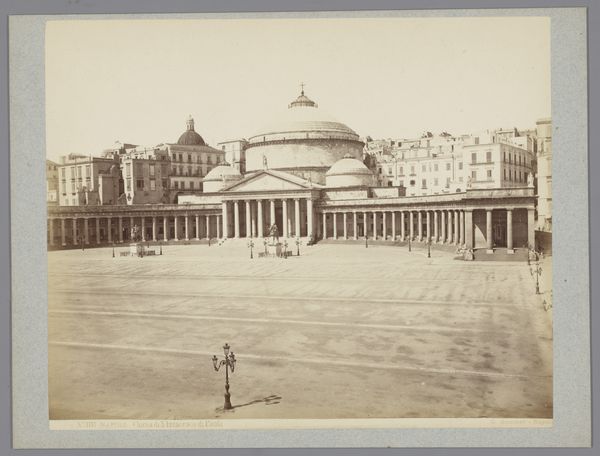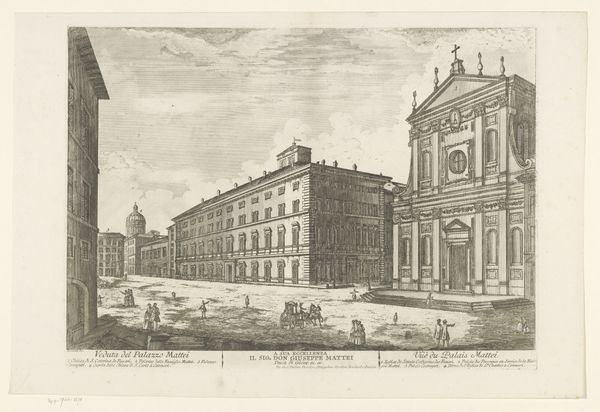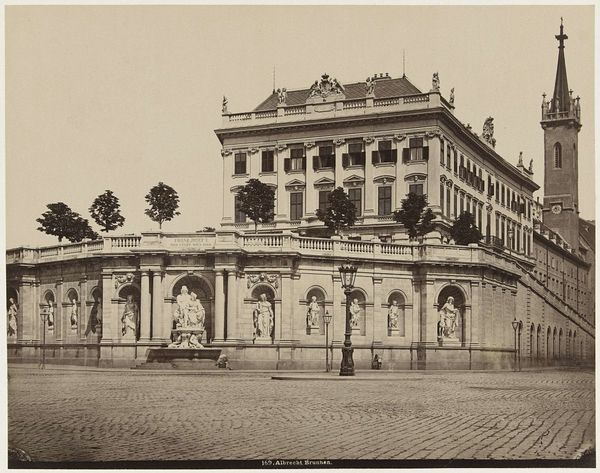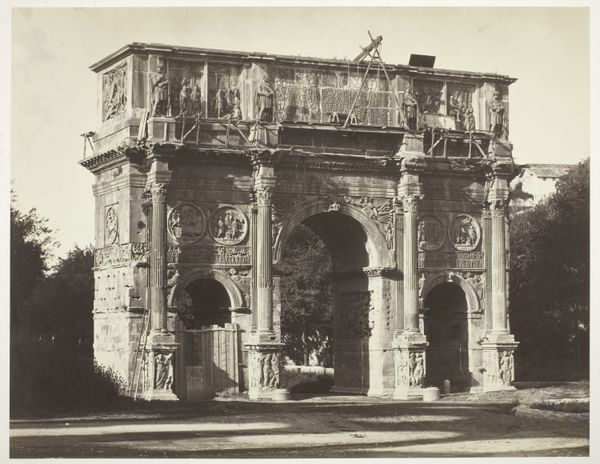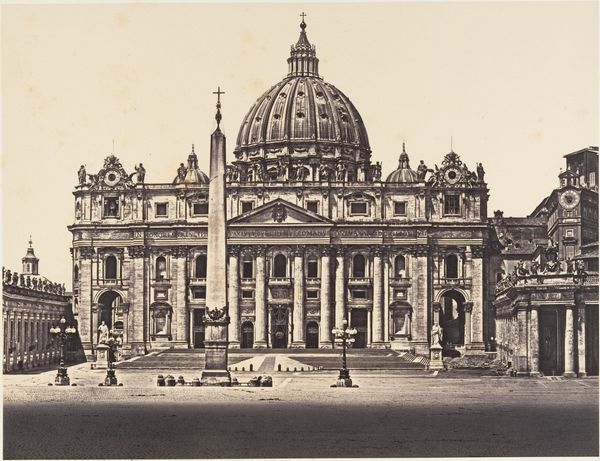
print, etching, photography, architecture
# print
#
etching
#
landscape
#
historic architecture
#
traditional architecture
#
photography
#
romanesque
#
historical photography
#
cityscape
#
architecture
Dimensions: Image: 8 11/16 × 11 5/16 in. (22 × 28.7 cm) Sheet: 12 1/8 × 18 1/2 in. (30.8 × 47 cm)
Copyright: Public Domain
This albumen print of S. Giovanni Laterano was made by Eugène Constant, though we don't know exactly when. The albumen process, a popular photographic technique in the 19th century, involved coating paper with albumen—egg white—and silver nitrate, creating a light-sensitive surface. The choice of material and process has deeply influenced the image's appearance. The albumen gives the print its warm sepia tone and subtle gloss. Light reflects off the surface, enhancing details like the texture of the stone and the play of light and shadow across the facade. This photograph isn't just a straightforward record of the architecture, but rather a product of its time, reflecting the rise of commercial photography and tourism. The albumen print offered a relatively affordable and reproducible way to capture and disseminate images of iconic landmarks, making art accessible to a wider audience. Understanding the materials and processes of this print helps us appreciate its historical and cultural significance.
Comments
No comments
Be the first to comment and join the conversation on the ultimate creative platform.
